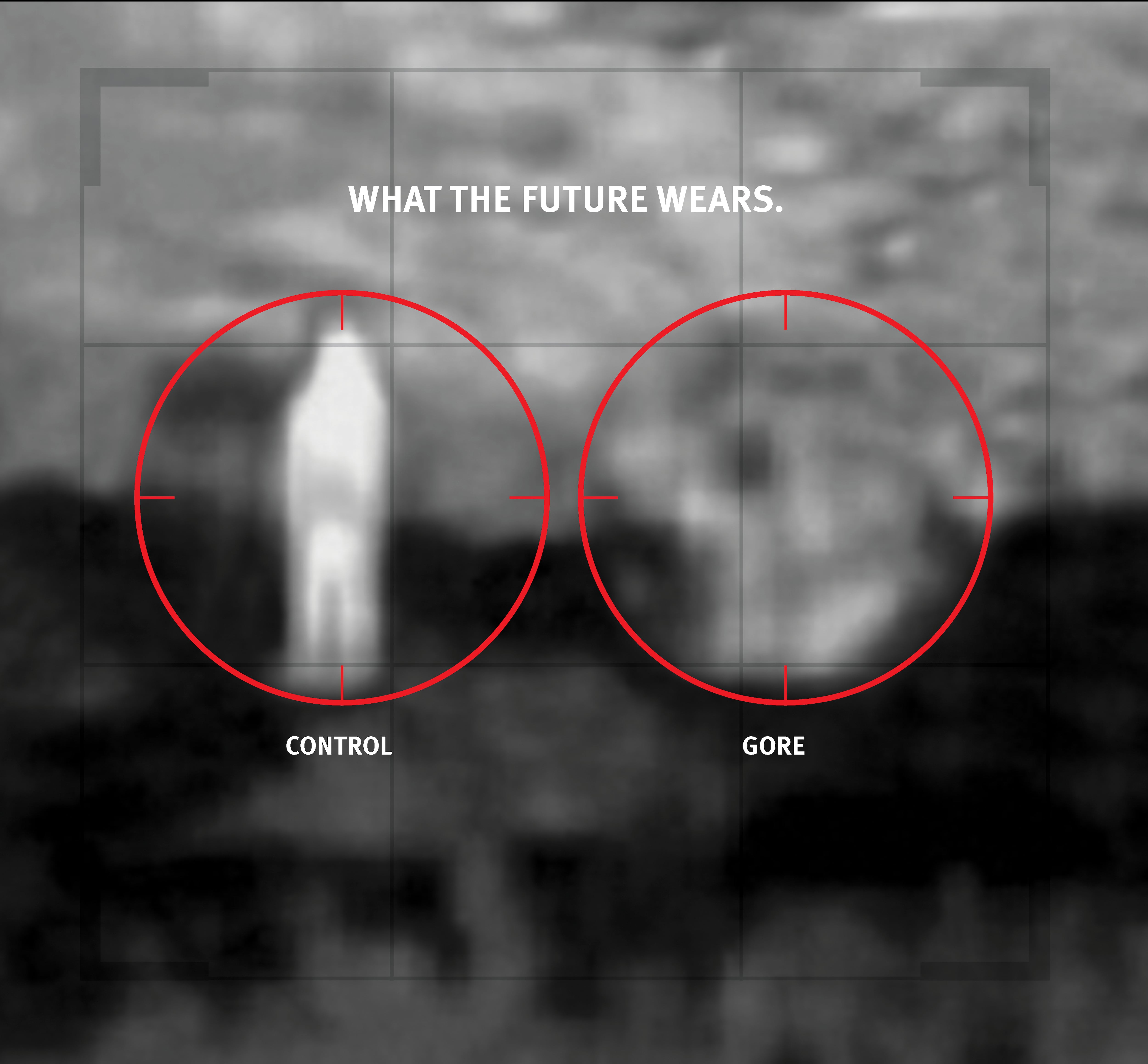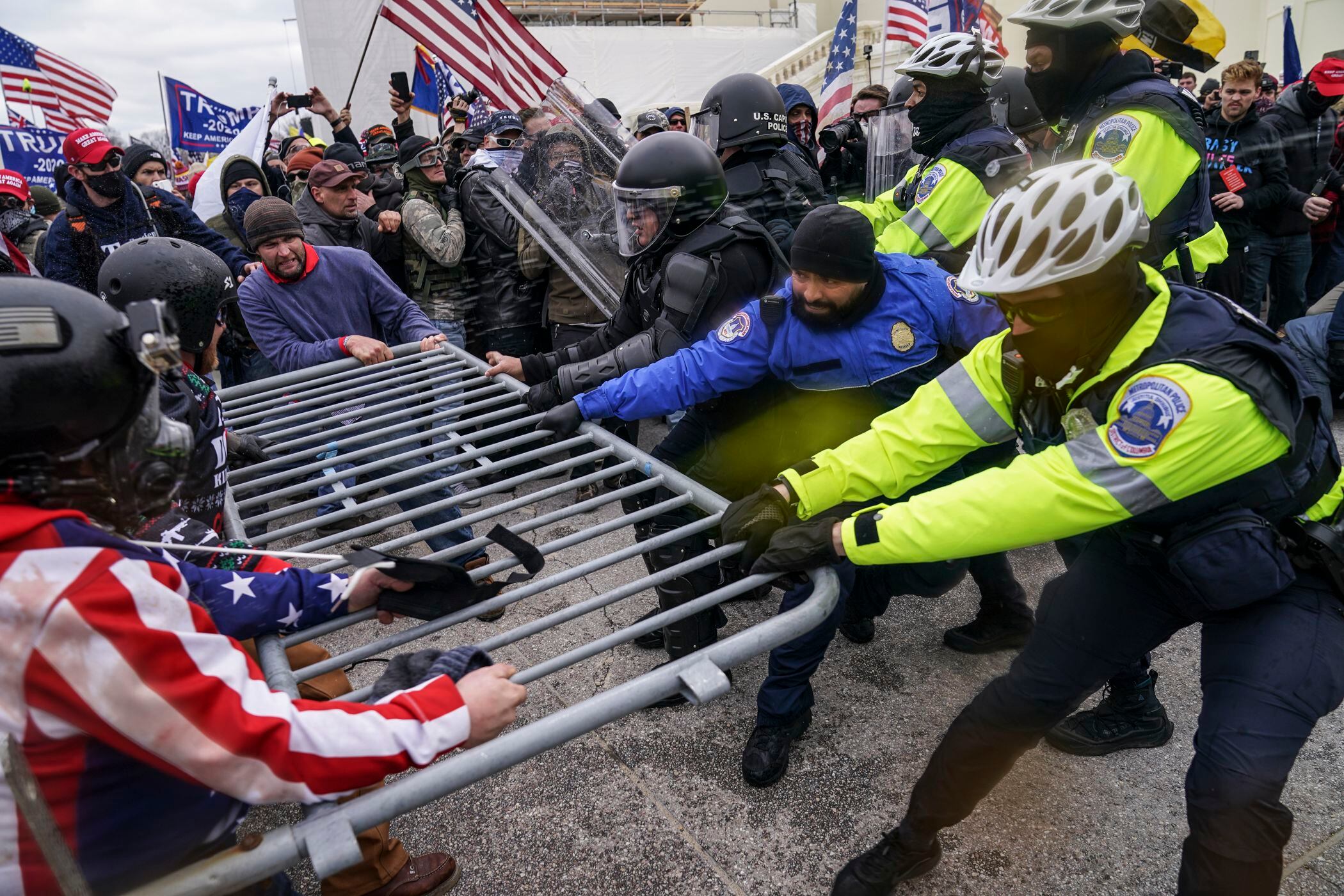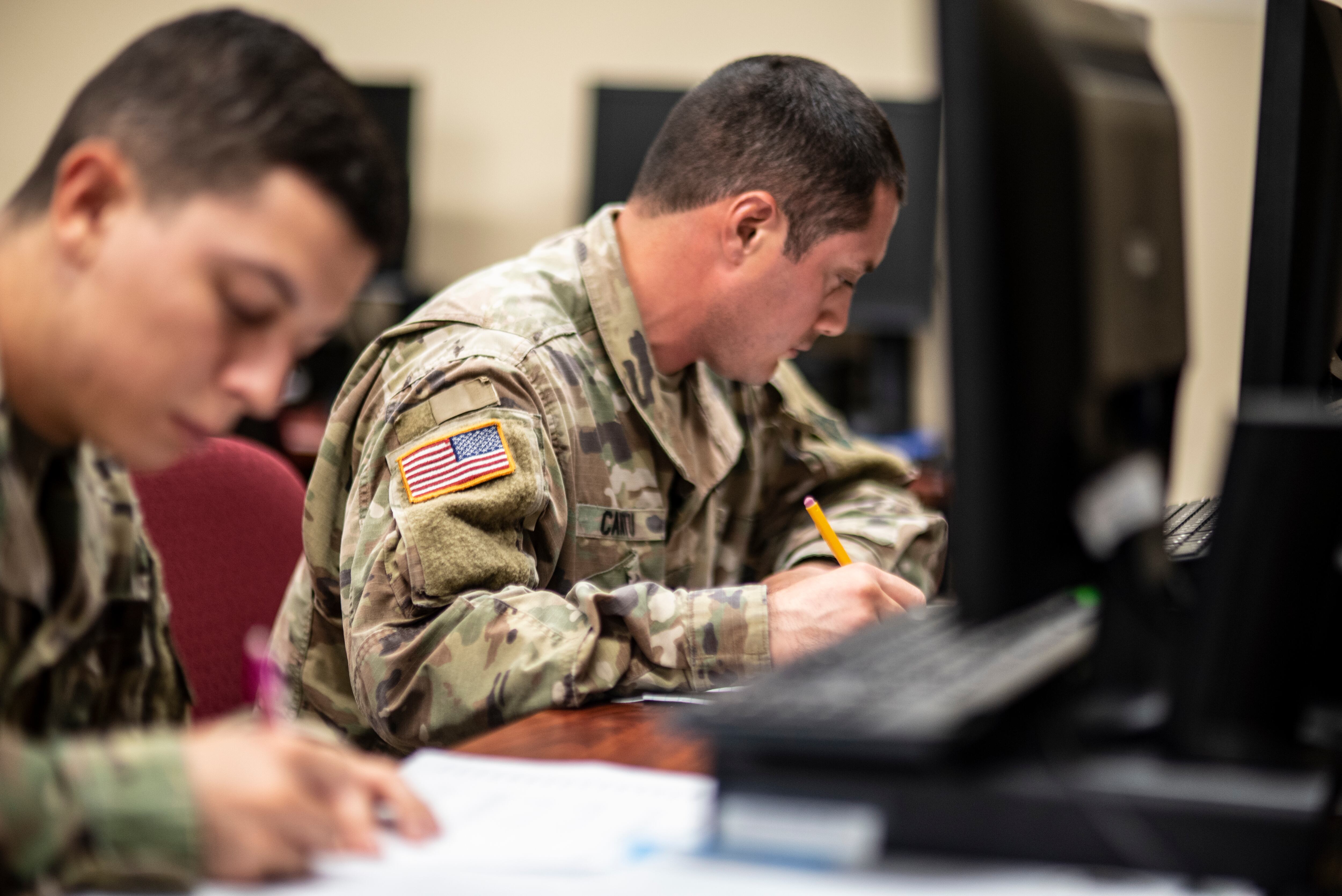There was a time when U.S. forces owned the night, conducting shadowy raids against enemies enemy forces who never saw them coming. But as night vision technology becomes more readily available, That was predicated on U.S. forces' dominance through of their use of night vision that advantage has ose nights have faded into but those nights are history.
One of the greatest battlefield threats now on today's battlefield is the proliferation of cheap night vision, thermal cameras and a plethora of other sensors. Those tools can that now give even underfunded third-world insurgents capabilities once reserved for military that were once the purview of world superpowers, according to defense industry experts.
Traditional camouflage is designed only to break up the shape of troops, helping and help them match the splotchy color of the natural environment in which they operate. But it's only effective when observed by the naked eye, which sees only a narrow piece of the entire electromagnetic spectrum. Some sensors are able to detect wavelengths on other parts of the spectrum that the human eye cannot, revealing that some seemingly invisible items actually stand out in a natural environment with the help of cheap, widely available equipment.
No longer invisible
By all accounts tThe Marine Corps Combat Utility Uniform was the first digital camouflage pattern adopted by the Defense Department. Featured in to sporting Marine Pattern camouflage in desert and woodland colors, its pattern is thought to be — the first digital pattern adopted within the Defense Department — is among the best available in concealing troops from the naked eye in its ability to conceal Marines to the naked eye.
But the uniforms it — along with those worn by other and the other services uniforms including the Army's, — have a weakness n Achilles heel. They strongly contrast natural environments when observed with one of several sensors designed to detect other portions of the electromagnetic spectrum, like the ultra violet or infrared ranges which are above and below the visible spectrum, respectively.

Some sensors pick up signatures that are invisible to the naked eye. The figure on the left is wearing standard camouflage while the figure on the right wears multispectral camouflage that can better conceal against sensor surveillance.
Photo Credit: Courtesy of Gore
That includes the short-wave infrared range, which the Marine Corps leaders identified as a serious became keenly aware of as a threat when they purchased commercial SWIR sensors for testing and realized MARPAT uniforms glow in front them, said Russ Hornung, the W.L. Gore & Associates, Inc.
the W.L. Gore & Associates, Inc. product manager working on next-generation concealment capabilities.
product manager working on next-generation concealment capabilities.
SWIR tends to pick up anything synthetic, and Marine uniforms incorporate nylon as part of a cotton blend.
Add new, inexpensive sensors to unmanned aerial vehicles now cheaply available on the civilian market for hundreds or a few thousands dollars and you have a deadly recipe That could rob U.S. forces of their ability to dominate the battlefield, according to experts.
"Since the 1990s, anybody can purchase a Sony camcorder, put an appropriate filter on it and see UV or near IR," said Reed F. Curry, the president of UVR Defense Tech, Ltd., which produces products to conceal UV signatures.
That sort of technology is even being used by academics to map archaeological sites from unsophisticated kites, Reed added, putting the capability well within the reach of insurgents and non-state actors.
"We have been using UV sensors ourselves from drones to detect real-time enemy movements," he said. "However, we haven't done the same in terms of protecting our own troops from that."
A growing market
To combat the threat of insurgents purchasing consumer cameras and altering them to work as battlefield sensors or nation states developing next-generation optics, a host of gear and clothing companies are working to develop counter measures. Reed reiterated that today anybody can purchase a consumer camera and alter it to work as an effective battlefield sensor that could even be affixed to a relatively cheap but capable hobby-grade UAV. It was a point echoed by Hornung who stressed the emergence of cheap sensors beyond just the visual and UV spectrum."UAVs are a big part of what is driving signature management," he said. "That and continued lower costs of commercial thermal sensors. You can even get them from Cabela's for hunting. There are even thermal sniper scopes for hunting pigs."
Enter a small, but growing host of gear and clothing offerings on the domestic an international market to counter sensors across the electromagnetic spectrum including Gore's latest line of multrispectral concealment materials are now being used, evaluated and researched by the Marine Corps, Army and SOCOM. The company that has worked for decades to keep troops and campers warm and dry with breathable waterproofing is now hoping to save lives with next-generation camouflage.
Their products includes an individual concealment over garment that looks like a ghillie suits, small tarps and large reversible tarps to conceal sizable equipment like vehicles.
All offer traditional visual concealment while also dispersing thermal signatures and scattering electro-optical and electromagnetic signatures. In layman's terms, that means they are difficult to see at night or day by an observer whether using the naked eye, thermal sensors, or one of many kinds of infrared sensors for short, -mid, or long-wavelength infrared.
Gore isn't the only company working to fill the need. On the international market, Israel-based Fibrotex Technology offers an array of multispectral concealment products ranging from a personal camouflage net or sniper camouflage tent to coverings for mobile platforms like tanks.
Fibrotex TechnologyThey currently now suppliesy the Finnish Ministry of Defencese with multispectral camouflage systems and an undisclosed NATO country with a reversible, personal camouflage screen for part of that country's "elite soldier's survivability pack," according to a company press release.
SWIR sensors are useful to artists for the ascetically pleasing effect they can have on a photo and according to Semelroth have "many commercial uses," but can be "developed for military applications" too.
Even commercial SWIR sensors, now prohibitively expensive, will become cheaper as manufacturers begin producing higher volumes and foreign firms in countries without strict export controls for some goods with military applications — like China — begin manufacturing them, Hornung said.
Despite the increased threat, Reed said he has failed to gain traction marketing his products to the Defense Department. He pitched his product to the U.S. Army's Natick Soldier Systems Center, but didn't receive interest, he said. He later turned to work with the Navy Department of the Navy on an aerial application of his product that would make aircraft match the UV reflectivity of open sky. That would help defeat Man-portable air-defense system threats like the Stinger missile, . MANPADS use both IR and UV signatures. Standard countermeasures including flares only address the threats IR targeting, but he said efforts to defeat UV targeting were sidelined by budget cuts with sequestration.Reed has instead turned to work with fabric manufacturers focusing on his product's ability to lengthen the life of fabrics by protecting them from UV damage over time. He has since sold licenses for his product in the British market.
Gore representatives said they envision a day when multispectral concealment will be incorporated into all uniform items as a standard feature instead of something that must be worn to complement existing uniform items.
"The Holy Grail is to give that to the warfighter — SWIR and thermal concealment without an additional garment," Hornung said. "That is in our research and development."
The military may already be heading in that direction.
"There are requirements to conceal personnel and equipment – moving and stationary – across the electromagnetic spectrum that could incorporate camouflage tarps, paints, dyes, etc. to facilitate that type of concealment," Semelroth said. "There is no question advancement in concealment will improve our Marines' ability to exploit enemy vulnerabilities and increase our overall combat effectiveness," Semelroth said.
Marine Corps Systems Command, which is responsible for actually testing, developing and procuring next-generation equipment based on requirements from CD&I, said efforts are already underway.
which is responsible for actually testing, developing and procuring next-generation equipment based on requirements from CD&I, said efforts are already underway.
"We are working with the Army on continuing development for multispectral concealment not just in garments but also in gear," said wrote Barb Hamby, a MARCORSYSCOM spokeswoman. "This is a requirement which CD&I is developing and we are pursuing the technology for inclusion into future camouflage and gear."
MOST RECENTLY, ARMY TESTING FROM ARMY TIMES.
The dire need for multispectral concealment to protect troops and equipment is older than most people care to realize, he said, hoping that an aggressive approach is finally taken to close the cpabilities gap. Decades ago NATO created requirements that gear like tents used in polar conditions should have an ultraviolate reflectivity to match snow. Because snow is highly reflective, most gear will readily show up as a dark patch.
But NATO didn't extend that to other environments or equipment, Reed said. In other environments, the same camouflage might be more reflective than the natural environment – jungle foliage, for example – and glow bright as the Marine Corps has found with MARPAT.
"They reflect too much so against a background of foliage even the latest camouflage for Marnines, MARPAT, or any common pattern like MultiCam is simply much too bright," he said.





